Is It Better to Suck or Blow Heat Sink Fans

Thiago Trevisan/IDG
Hot hardware is unhappy ironware, so where you place your Personal computer's fans plays a crucial part in how efficiently your precious components perform. This templet will explicate how to set up your Microcomputer fans for the best cooling performance—because you didn't stand in strain for days to get your expensive new graphics card just for IT to thermal throttle, after all.
In that respect are few important concepts that you should be aware of when it comes to setting up your varied Personal computer fans. Let's tackle them one after another. The knowledge should flow in quickly—just like the air in a well-configured system.
Flow of air direction
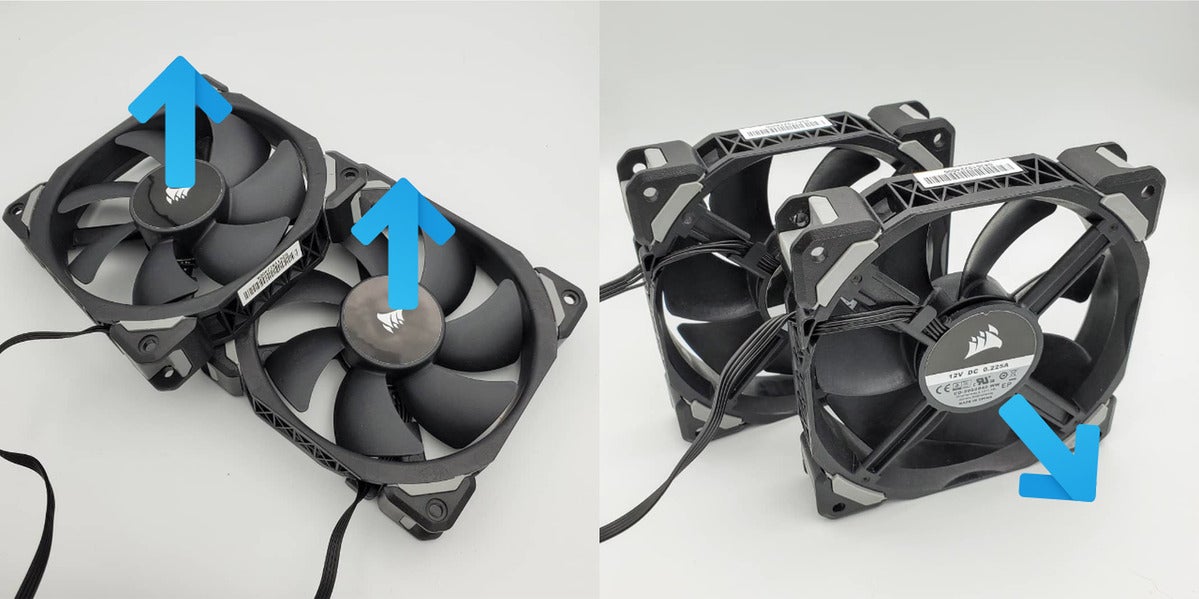 Thiago Trevisan/IDG
Thiago Trevisan/IDG Let's start with the basics. How you luff your fans determines whether it sucks in cool air or spits empty words out of your system. Few fans will have an arrow indicating the correct flow direction. If they don't, a proficient rule of finger is that air will virtually always flow in from the presence, where the branding sticker generally is. Air exits out of the dorsum, where the specialised information whitethorn be written about the lover. Our pathfinder to tattle which way your Microcomputer fan is blowing tin help if you need it.
The typewrite of fan matters too, though more to a lesser extent so than having them all configured in properly. Fans with higher static hale are ideal for wriggling air through dense water-cooling radiators. Fans with swollen airflow are great as intake or exhaust system happening your case atomic number 3 they can motivate large amounts of air.
Positive vs negative airflow
When fans get in more air than they push out of a PC slip, information technology creates positivist pressing. Negative imperativeness pulls more air out, oft creating a vacuum effect. For optimal cooling performance in a standard system, you want to be slightly Sir Thomas More happening the positive airflow go with. (This setup usually results in more dust entrance your PC, which you can mitigate with rubble filters or many predominant cleaning.)
How ut you achieve formal flow of air? Rich: Just take up much intake than tucker out fans, OR run your intake fans slightly faster than your exhaust if they're in equal phone number. Speaking of…
Intake vs exhaust
Intake and exhaust placements might equal the single most determining concept for proper devotee placement. The idea is unsophisticated: Fresh cool air in, hot air out. You generally want to ingest both consumption and exhaust fans. (There can be exceptions to this, such A in runty form factor builds.)
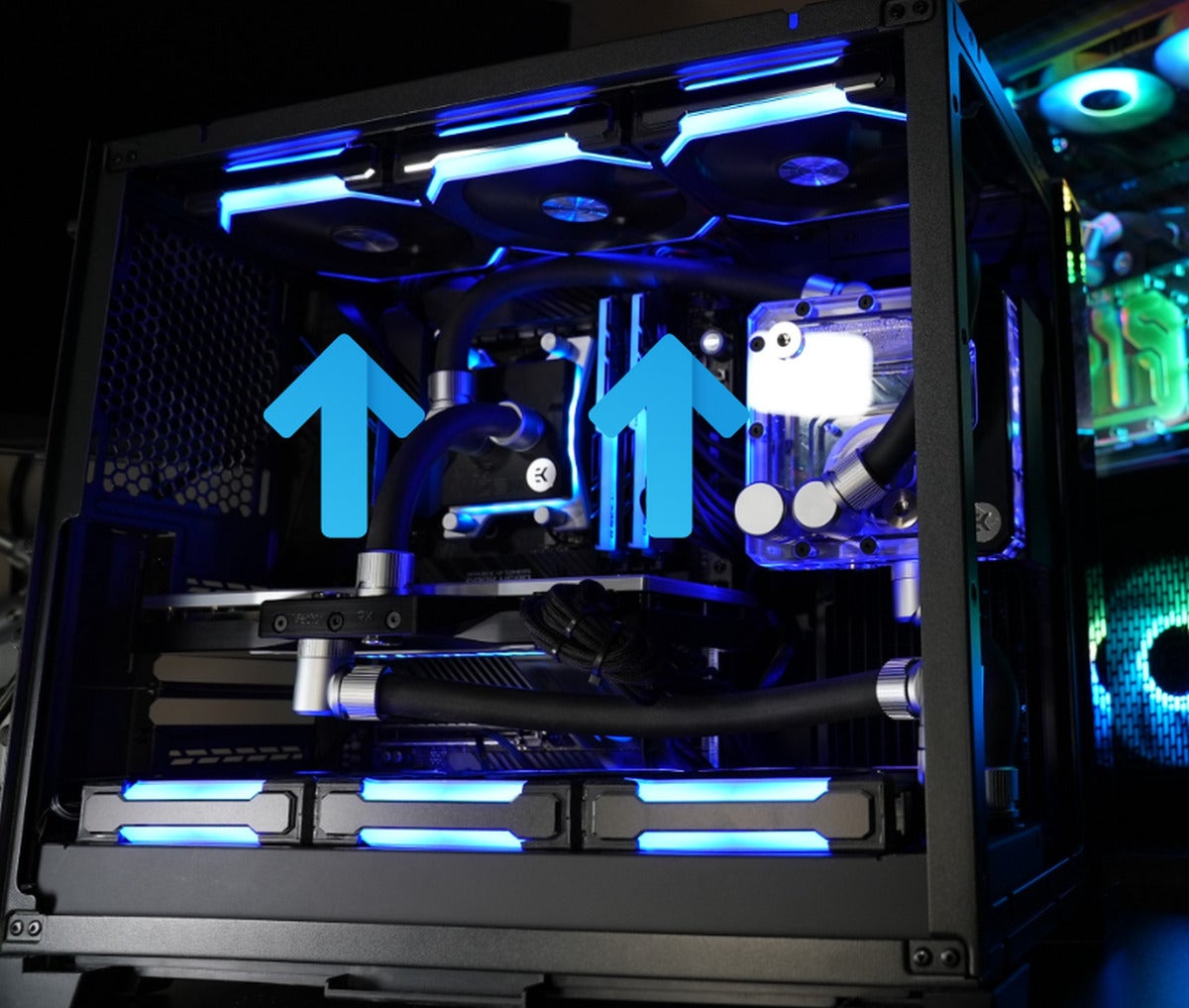 Thiago Trevisan/IDG
Thiago Trevisan/IDG Example A: Let's choose the popular Lian Li O11 Dynamic case. A cubic fan configuration would include intake fans on the bottom, and exhaust fans connected top, as shown in the image above. Fresh send will enter the case, cooling your components. Hot melodic phrase generated by your hardware rises and will leave through and through the top exhaust fans.
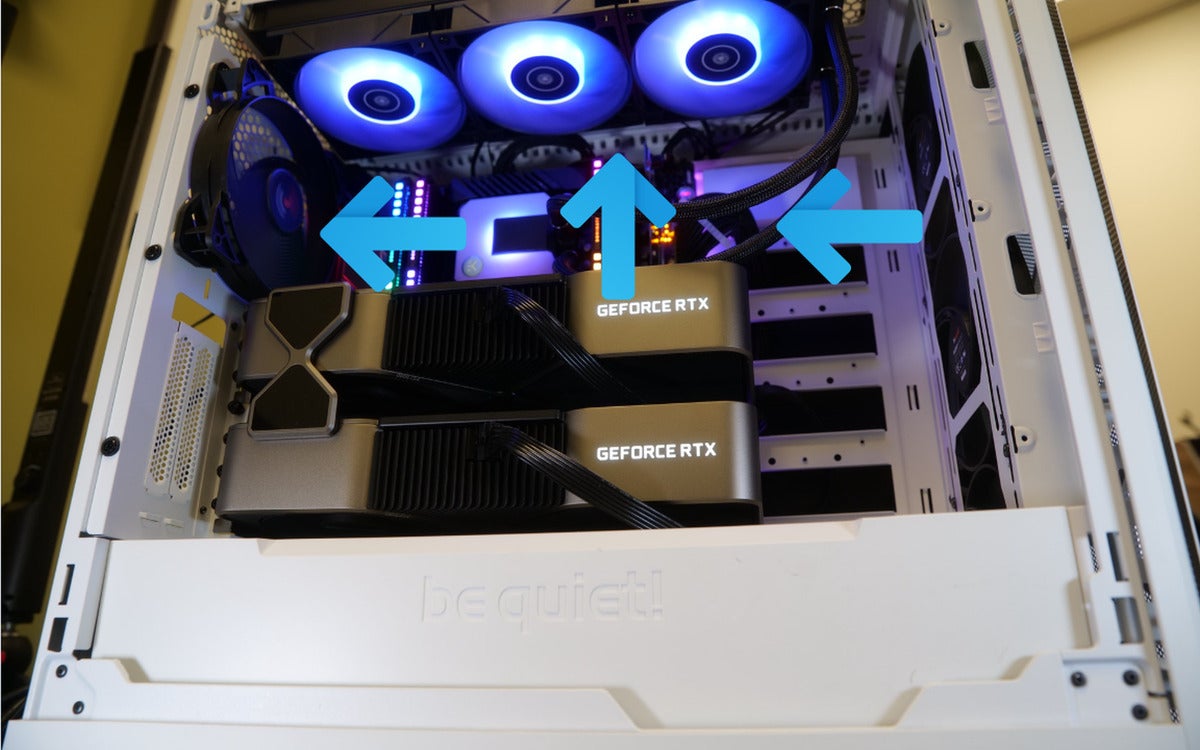 Thiago Trevisan/IDG
Thiago Trevisan/IDG For Example B, let's look at a more traditional case, the Be Quiet Silent Baseborn 802. A optimal devotee configuration would include intake fans along the front line of the case. You'll also want to add the top exhaust fans. Including an exhaust fan on the rear of the example will pancake-like out an optimal setup.
A configuration like that testament get cool air enter in the front, while the wanted send from the CPU and GPU so exhausts along the top and rear of the case.
In a standard desktop PC, you lack at to the lowest degree one consumption and one exhaust fan. Some cheaper cases only admit a single intake rooter on the breast of the PC, or a single exhaust fan at the behind. Spend a couple on bucks for another rooter so you have some.
Crowd vs. pull for liquid coolers
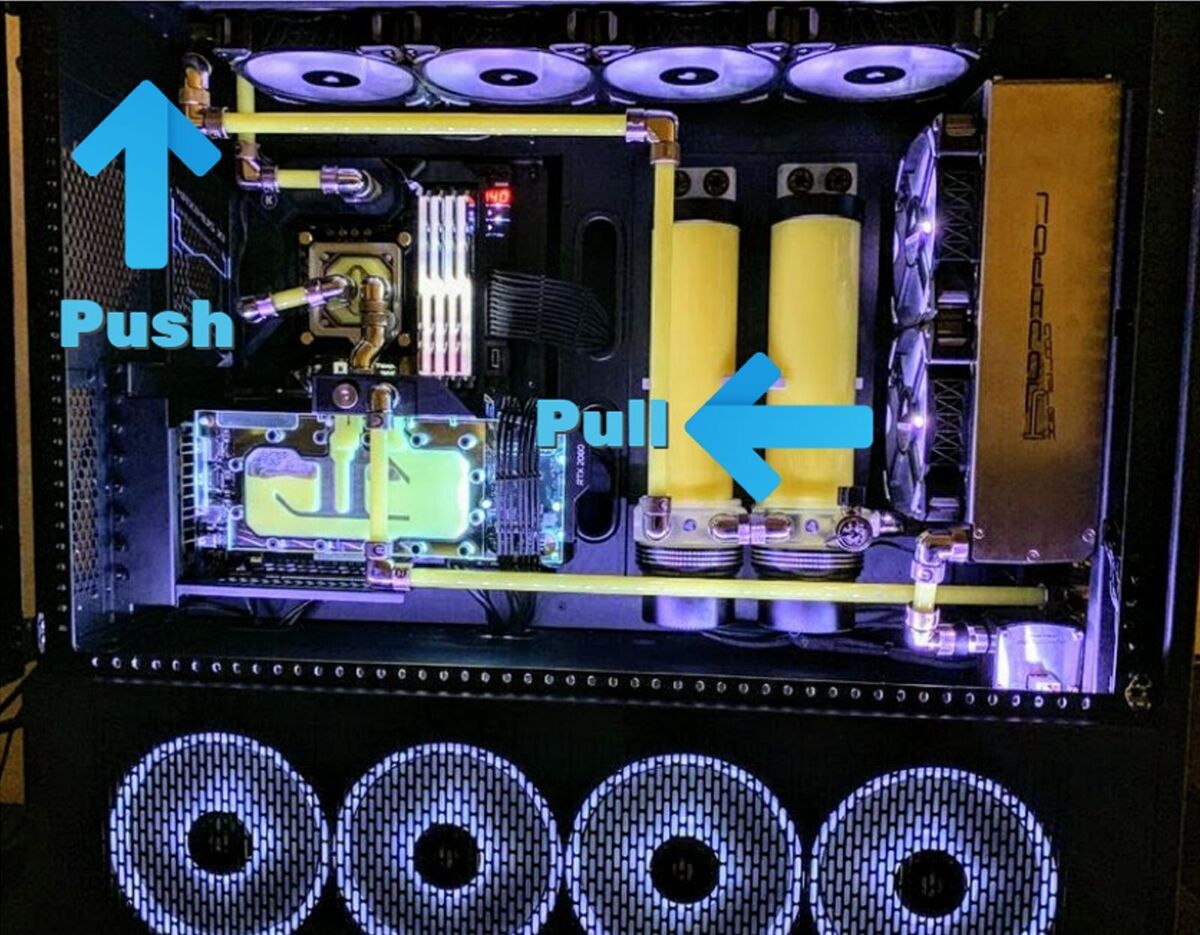 Thiago Trevisan/IDG
Thiago Trevisan/IDG Fans ordered at the front of your liquid-cooler's radiator with airflow going from straw man to back will be "pushing" air into your system. If you flip the fans and rank them rump the radiator, they're now "pull" bare in through with your liquid-cooler. (Like the envision above)
Which setup is optimal? Just about tests show a negligible dispute in push vs pull, simply we can gift a slight nod to "drive." In the main this volition work best in most case setups, and feed you efficient performance.
Case airflow and your CPU
AIO liquid cooler: If you're cooling your CPU with an AIO, optimum setups admit placing the radiator in the front or upside of your case. Some make for just fine. To prioritize the GPU cooling, you'd place the Central processor AIO on top of the case A an exhaust. This volition make the Central processor slimly heater, only your GPU will stay cooler.
Tower air cooler
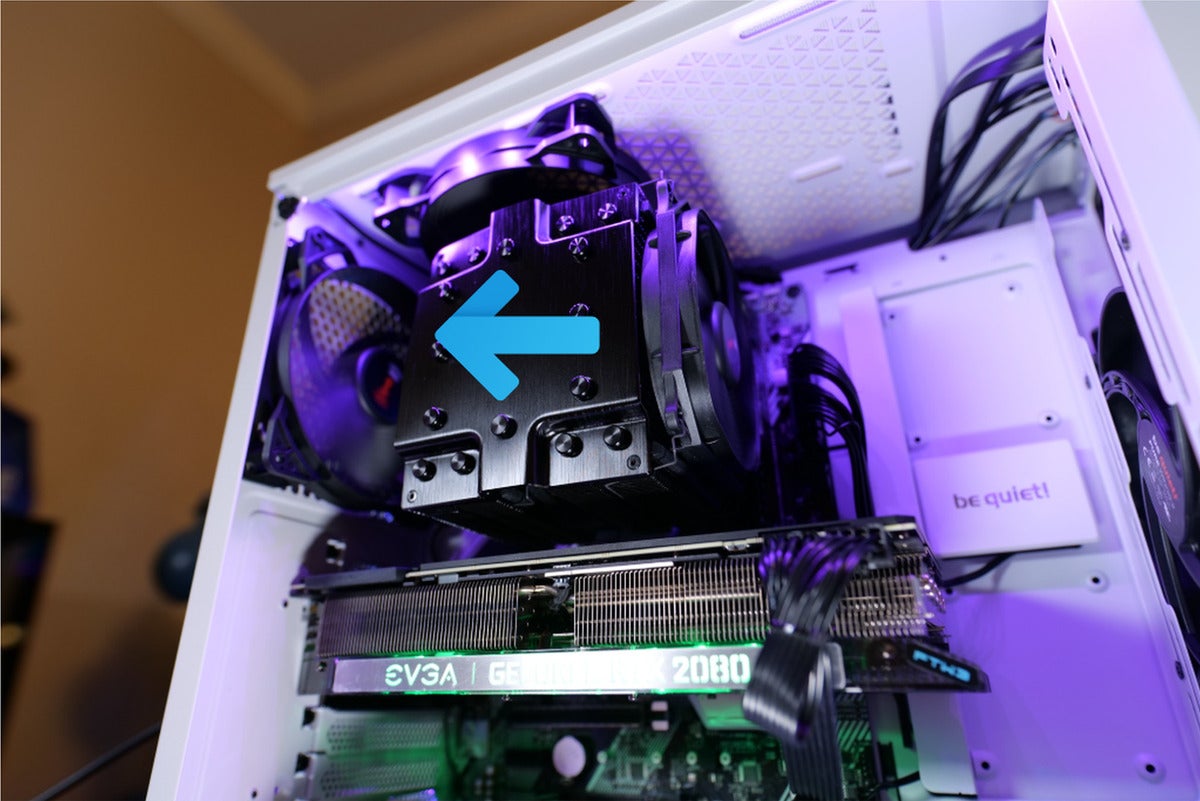 Thiago Trevisan/IDG
Thiago Trevisan/IDG With a traditional tower air cooler, you'd optimally want the fan settled connected the cooler's heatsink pushful vent towards the posterior exhaust of the case. In the instance above, the candid winding-clothes GPU will likewise exhaust hot air upwards—a typical setup for a gaming rig. This leave slightly increase your Mainframe temperatures when victimisation an air cooler; you can reduce the heat levels with optimal fan flow of air.
How about your GPU?
Standard open shroud GPUs exhaust very much of empty talk into your vitrine—even more than your CPU if it's a powerful graphics visiting card. What can you do to maximize chilling and airflow?
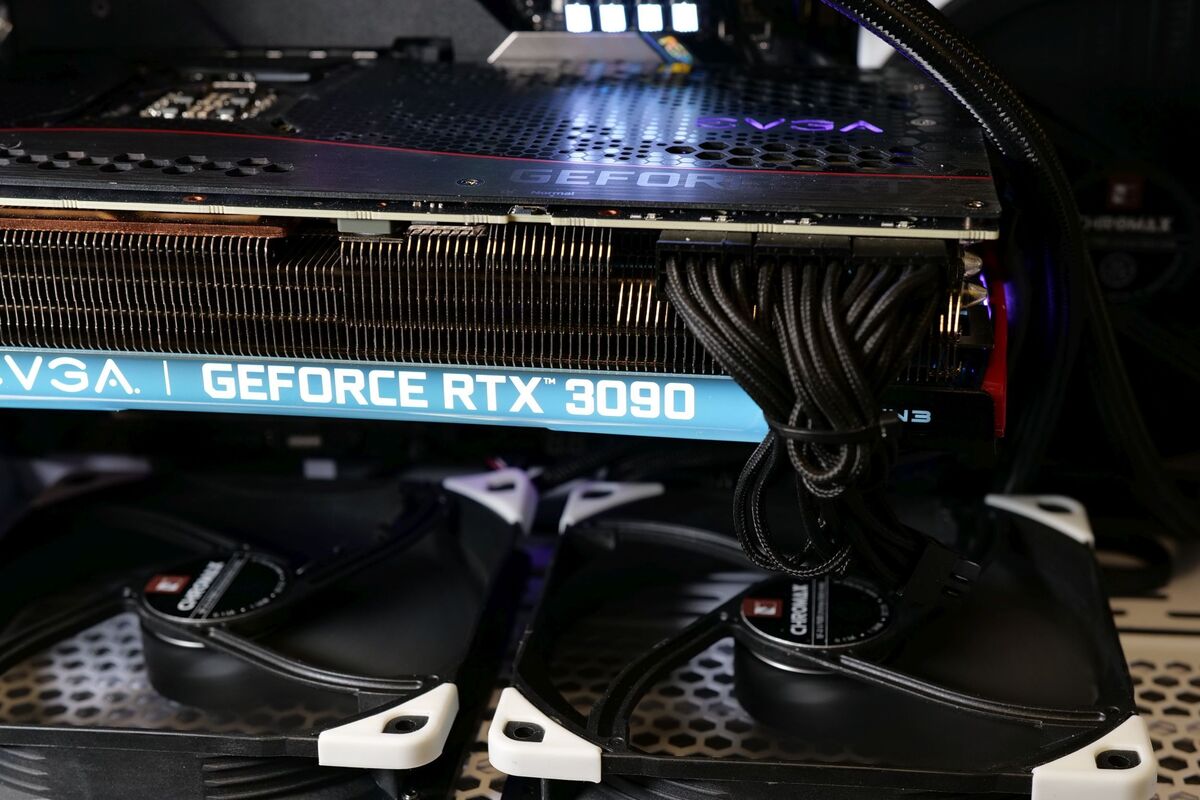 Thiago Trevisan/IDG
Thiago Trevisan/IDG If your case allows it, set up fans pushing air upwards towards your GPU on the tooshie. This wish give cool air straightaway to the intake fans on the GPU itself. If your case doesn't allow that configuration, receive a front uptake fan joined with proper top operating room buns exhaust fans, A described previously. Again: You always want at least one uptake and one exhaust fan in your system, and that goes double if it's a gaming getup.
Devotee curves and eccentric choice
There are 2 final important items to consider. Archetypal, case choice can aid tremendously in optimal fan airflow. Our explainer on buying the perfect PC case can help, though you should be good if you travel along these generalised guidelines:
- Use a case with a mesh front. These will have so much better airflow than cases with closed-off or glass front panels. Examples include the Fractal Design Meshify series, and the Be Quiet Silent Base 802 mentioned earlier.
- If you're using hot, powerful ironware, make sure to get a case large enough to suit the necessary fans. If you want to beat to a smaller case, consider using liquid cooling for more efficiency.
Second, utilize fan controllers to speck the champion noise to operation ratio that you can ascertain. All but midrange to high-closing motherboards include fan software either in their BIOS or as a Windows application. Example of this is the Asus Artificial insemination Rooms 3. You commode set your Mainframe and case temperatures based on actual thermals, which can give you quiet performance. Likewise, the fans can build when needed to constitute sure everthing stays cool.
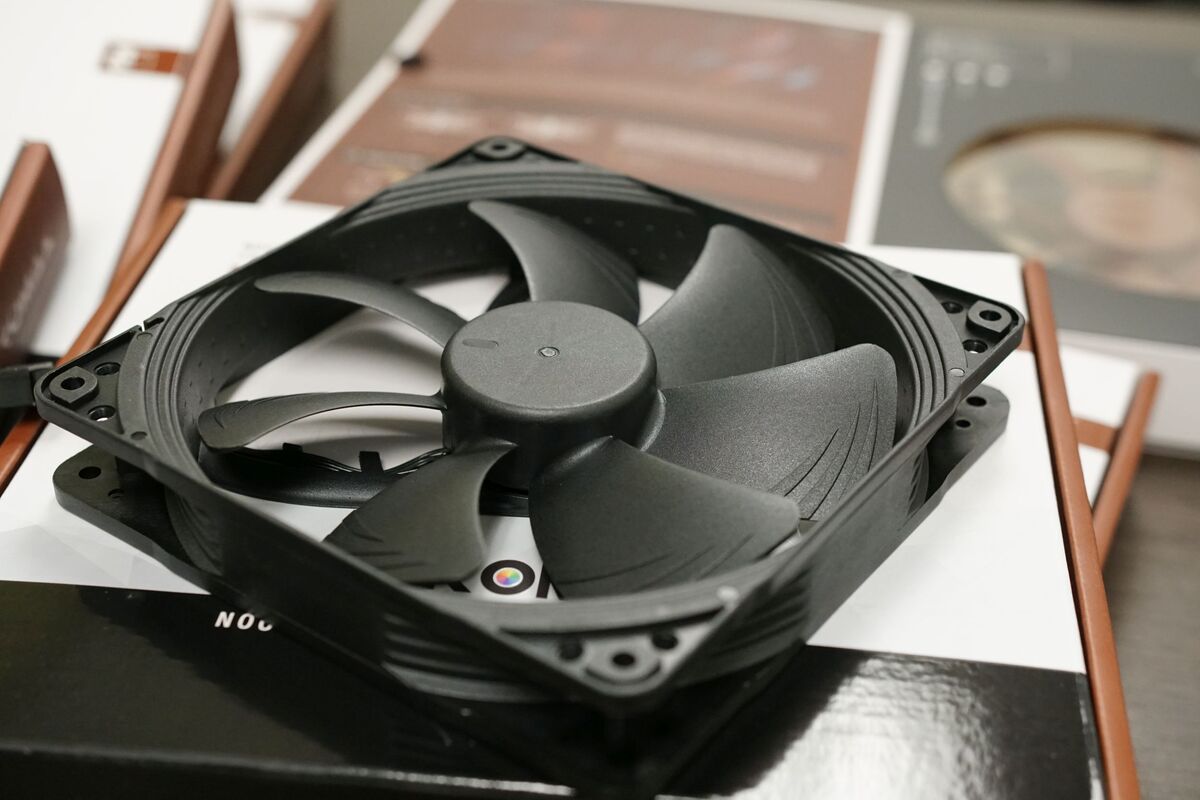 Thiago Trevisan/IDG
Thiago Trevisan/IDG If you want more advanced control of your devotee curves, hardware controllers from Aquacomputer, Corsair, and EKWB also survive that allow you to fine tune rooter curves even further. You can also base the fan speeds on the GPU operating theater utilization thermal sensors with these more advanced units, only they're overkill for about people.
And there you have it: You now know everything needed to optimally position your fans for the best cooling carrying out. Our guides to checking your CPU temperature and your graphics batting order's GPU temperature lavatory help you confirm everything is operative smoothly. English hawthorn your temperatures be low!
Note: When you leverage something after clicking links in our articles, we may earn a soft commission. Learn our affiliate link policy for more details.
Is It Better to Suck or Blow Heat Sink Fans
Source: https://www.pcworld.com/article/394965/how-to-set-up-your-pcs-fans-for-maximum-system-cooling.html
